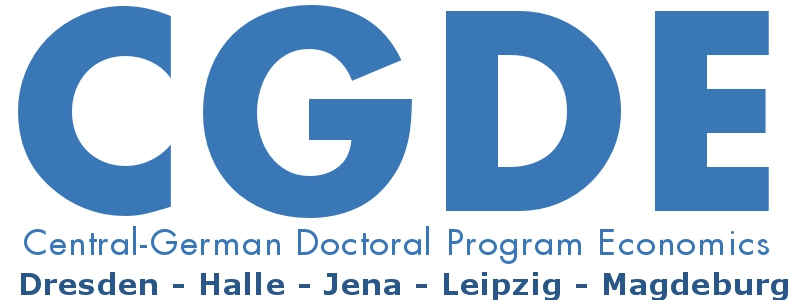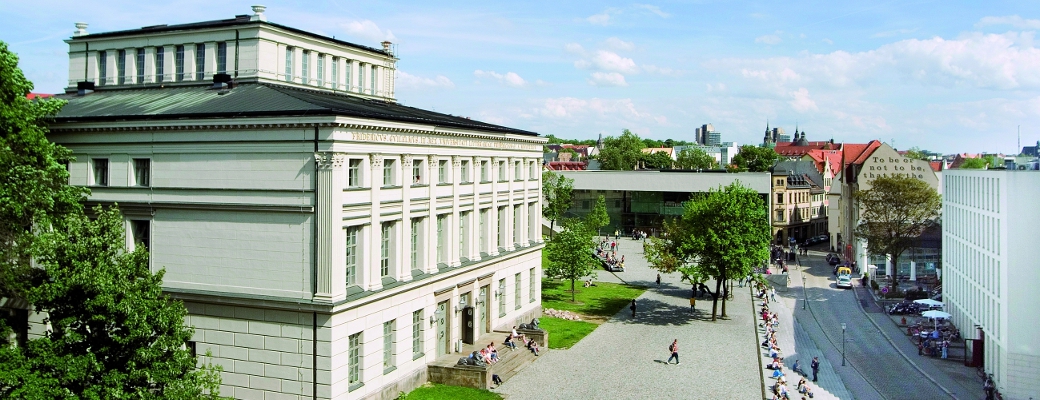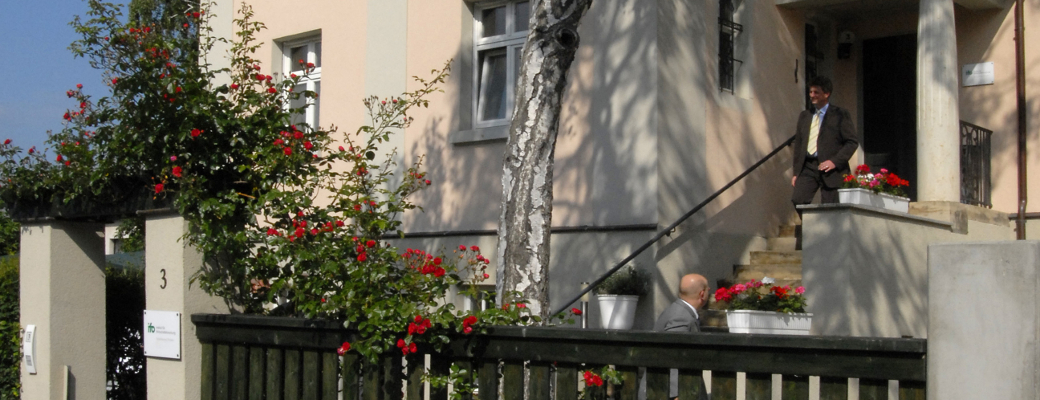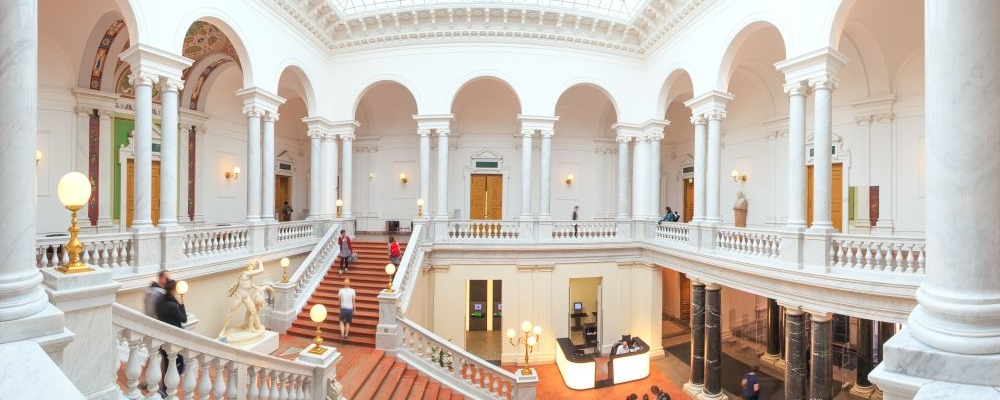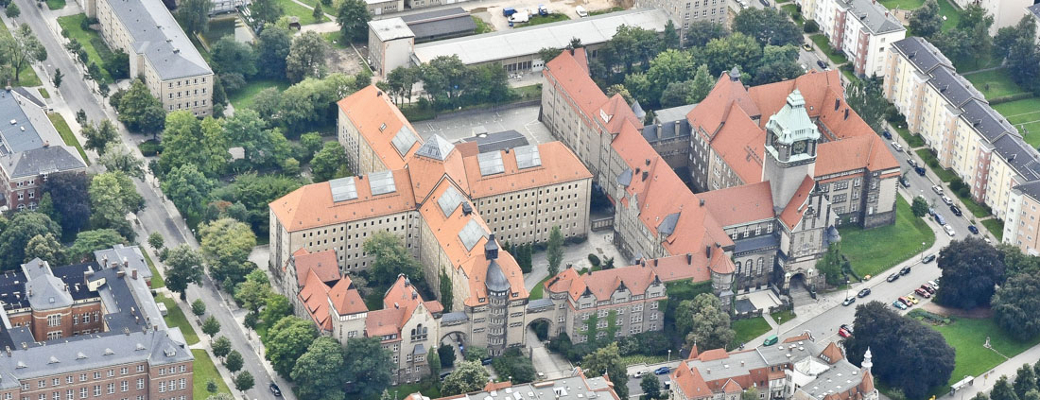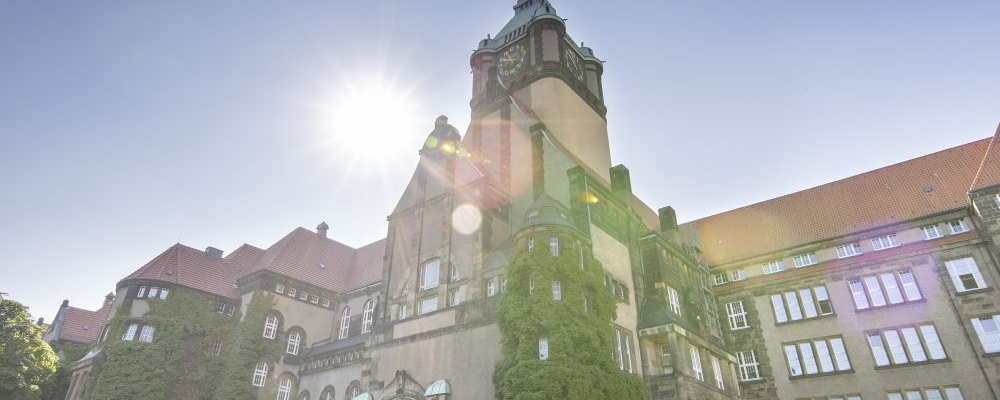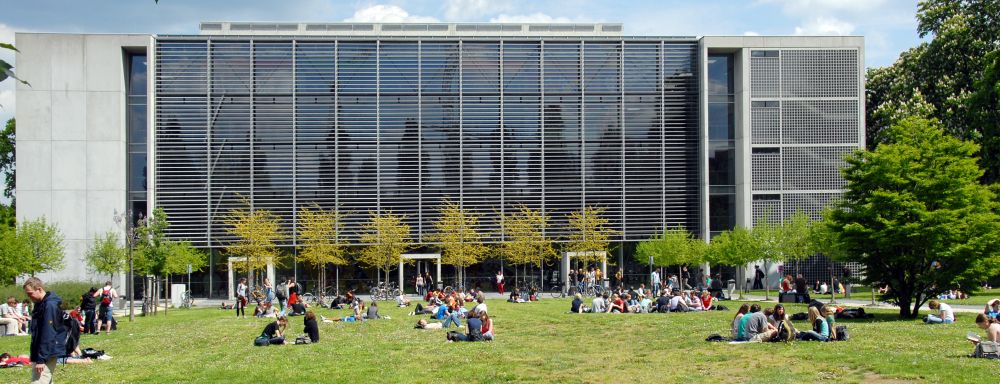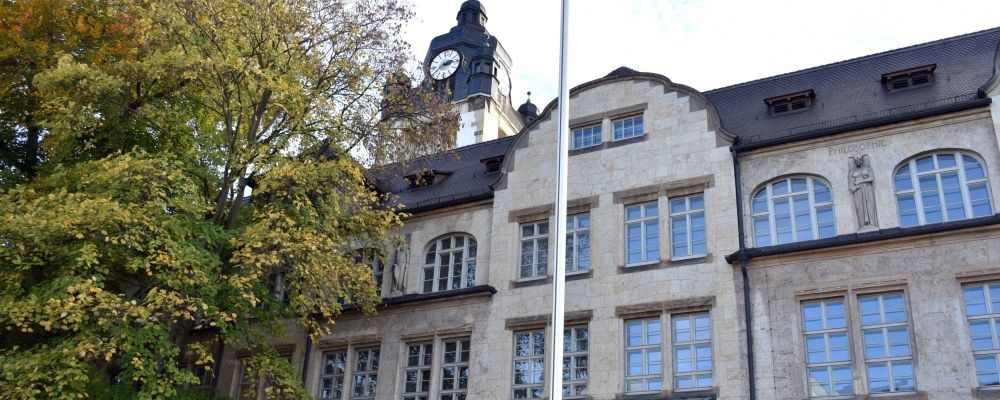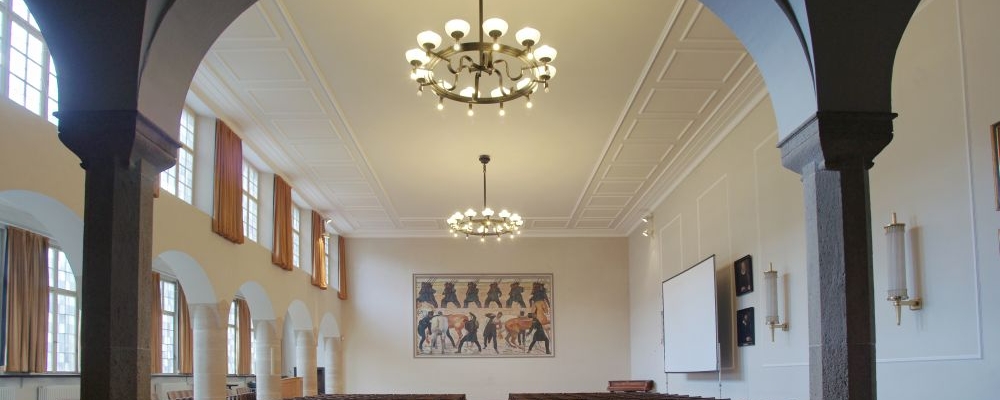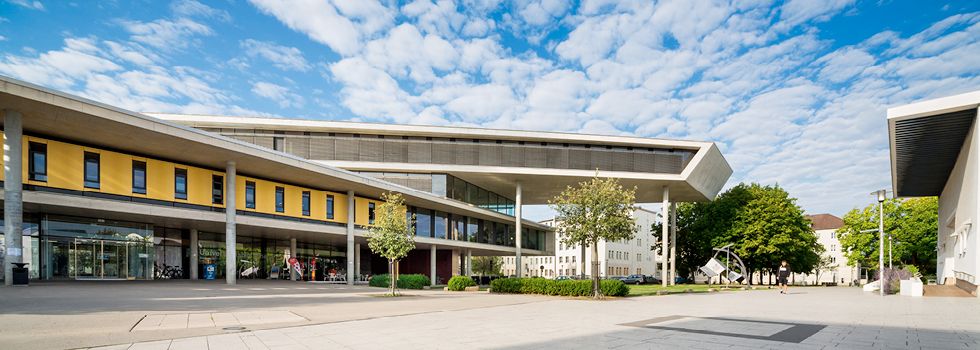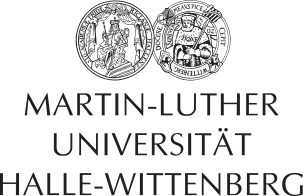Dynamic Resource Economics
Lecturer: Prof. Dr. Sjak Smulders (Tilburg University, Netherlands)
Date: June 23, 2014 – June 26, 2014 (Universität Leipzig), 10:00 am (time schedule
Venue: Universität Leipzig, Grimmaische Straße 12, Room: I 411
Registration: sprenger@wifa.uni-leipzig.de (Deadline: May 23, 2014)
Outline
This course of four four-hour lectures deals with a number of topics in environmental economics, with an emphasis on international environmental problems like climate change.
Central themes in the course are the dynamic aspects of environmental policy and the interaction between environmental policy and technological change. The course uses natural
resource theory (to study the dynamics of resource use) and growth theory (to study the link with technology and the long-run general equilibrium effects).
We try to answer questions like the following:
· What is the optimal carbon tax?
· Should green technologies be subsidized?
· Should we mainly rely on carbon taxes or on green subsidies?
· When are growth and environmental improvement compatible?
· Will we grow out of pollution? What drives the Environmental Kuznets Curve?
· How can we prevent “carbon leakage”?
At least a modest background in mathematics (including optimization and elementary optimal control) is expected of students.
In the course we will see a mix between “fundamental robust insights” and “new challenges in the literature”, so that the course might be interesting both for the student with a general interest in the field and for the student who plans to do (theoretical) research in the field.
Reading list
(*The asterisks indicate main articles)
1. Environmental policy and technology
· *Goulder, L. and K. Mathai. 2000. “Optimal CO2 abatement in the presence of induced technological change”, Journal of Environmental Economics and Management 39, 1-38.
· *Requate, T. and W. Unold (2003) “Environmental policy incentives to adopt advanced abatement technology: Will the true ranking please stand up?” European Economic Review 47, 125-146.
· *Smulders, Sjak and Corrado Di Maria. 2012. “Endogenous Technological Change and the Cost of Environmental Policy”. CESIfo working paper.
· Reichenbach, Johanna and Till Requate. 2012. “Subsidies for renewable energies in the presence of learning effects and market power”. Resource and Energy Economics, 34, 236-254.
2. Environment and (limits to) growth
a. Limits to growth
· Brock, William A. and M. Scott Taylor (2005) “Economic Growth and the Environment: A review of theory and empirics” in Philippe Aghion and Steven N. Durlauf (eds) Handbook of Economic Growth, Volume 1B. Amsterdam: Elsevier.
· Groth, Christian. 2007. “A New-Growth Perspective on Non-renewable Resources” in Bretschger and Smulders (eds) Sustainable resource use and economic dynamics.
Dordrecht: Springer/Kluwer.
Available at http://www.econ.ku.dk/okocg/Articles%20by%20Groth/Groth_2007_SUREDbook.pdf
b. Directed Technical change
· *Acemoglu, D., P. Aghion, L. Bursztyn, and D.Hemous. 2012. “The environment and directed technical change.” American Economic Review 102, 131-166. [available at http://www.anderson.ucla.edu/faculty/leonardo.bursztyn/AABH_AER.pdf ].
· Di Maria, Corrado, Edwin van der Werf, 2008. „Carbon leakage revisited: unilateral climate policy with directed technical change,“ Environmental & Resource Economics, 39(2), 55-74.
· Di Maria, C., and S. Smulders. 2004. ‘Trade pessimists vs technology optimists: Induced technical change and pollution havens.’ Advances in Economic Analysis and Policy.
4(2), 7.
c. Pollution-GDP dynamics (and the Environmental Kuznets Curve)
· Brock, William A. and M. Scott Taylor. 2010. “The Green Solow Model.” Journal of Economic Growth.
· *Cherniwchan, Jevan. 2012. “Economic Growth, Industrialization, and the Environment”, Resource and Energy Economics doi:10.1016/j.reseneeco.2012.04.004
· Ordas Criado, C., S. Valente, T. Stengos. 2011. “Growth and pollution convergence: Theory and evidence.” Journal of Environmental Economics and Management 62, 199-214.
d. Climate disasters and growth
· Van der Ploeg, R. and A. de Zeeuw. 2014. “Climate Tipping and Economic Growth: Precautionary Saving and the Social Cost of Carbon”
3. Climate policy and depletion: Too much oil?
a. Non-renewable resources
· *Heal, G.M. (1976), “The relationship between price and extraction cost for a resource with a backstop technology”, Bell Journal of Economics 7 (Autumn), 371-378.
· *Lin, C. and G. Wagner. 2007. “Steady state growth in a Hotelling model of resource extraction” Journal of Environmental Economics and Management 54, 68-83.
· Hart, Rob and Daniel Spiro. 2011. “The elephant in Hotelling’s room” Energy Policy 39, 7834-7838.
· Golosov, Mikhail, John Hassler, Per Krusell, Aleh Tsyvinski. 2014. “Optimal Taxes on Fossil Fuel in General Equilibrium” Econometrica 82, 41-88.
· Andre, F.J. and S. Smulders. 2014. Fueling growth when oil peaks: Directed technological change and the limits to efficiency. European Economic Review (forthcoming).
b. The green paradox, announcement effects, and implementation lags.
· Sinn, H.-W., 2008. “Public policies against global warming: a supply side approach.” Int Tax Public Finance 15: 360-394.
· *Van der Ploeg, F., and C. Withagen. 2012. “Is there really a green paradox?”. Journal of Environmental Economics and Management 64, 342-363.
· Gerlagh, Reyer. 2010. “Too much oil.” CESifo Economic Studies, doi:10.1093/cesifo/ifq004
· Harstad, Bard. 2012 “Buy Coal! A Case for Supply-Side Environmental Policy” Journal of Political Economy 120, 77-115.
[Also available at http://www.kellogg.northwestern.edu/faculty/harstad/htm/deposits.pdf]
c. Biofuels and Renewables
· Van der Ploeg and Withagen. 2014. “Growth, Renewables and the Optimal Carbon Tax” International Economic Review 55 (1) 283-311.
· *Hassler, J. and H.-W. Sinn (2012). “Fossile Episode” CEPR discussion paper 9256.
· Ujjayant N. Chakravorty, Marie-Helene Hubert and Beyza Ural Marchand, 2012. „Food for Fuel: The Effect of U.S. Energy Policy on Indian Poverty“
Available at: http://works.bepress.com/chakravorty/3
4. Sustainable development and Green accounting
· Chichilnisky, G. 1997. “What is Sustainable Development?” Land Economics 73/4, 467-491.
· *Cairns, R. and V. Martinet. 2014. “An environmental-economic measure of sustainable development” European Economic Review forthcoming.
· Van der Ploeg, F. 2010. “Why do many resource-rich countries have negative genuine saving? Anticipation of better times or rapacious rent seeking.” Resource and Energy
Economics 32, 28-44.
· *Arrow Kenneth J. Arrow, Partha Dasgupta, Lawrence H. Goulder, Kevin J. Mumford, and Kirsten Oleson. 2012. “Sustainability and the Measurement of Wealth” Environment and Development 17, 317-353
Time Schedule
Monday
10:00 – 11:30 (2 x 45 min)
Break: 60 min
12:30 – 14:00 (2 x 45 min)
Students working on assignments
Tuesday
9:00 – 10:30 (2 x 45 min)
Small Break: 15 min
10:45 – 12:15 (2 x 45 min)
Break: 60 min
13:15 – 14:00 (1 x 45 min) discussion of assignments in class
Wednesday
9:00 – 10:30 (2 x 45 min)
Small Break: 15 min
10:45 – 12:15 (2 x 45 min)
Students working on assignments
Thursday
9:00 – 10:30 (2 x 45 min)
Small Break: 15 min
10:45 – 12:15 (2 x 45 min)
Break: 60 min
13:15 – 14:00 (1 x 45 min) discussion of assignments in class
